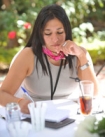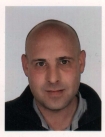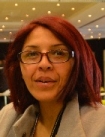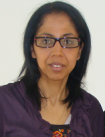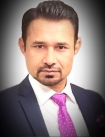News
Aimé Bille: The Man Who Refuses to Stay Silent
Dutroux case in Belgium
USPA NEWS -
Former Belgian gendarme Aimé Bille exposes the manipulations and cover-ups surrounding the Dutroux case and the murder of Christine Van Hees. A key witness in the shadow of a judicial scandal.
The Dutroux Case: What the Investigation Never Revealed
More than two decades after the shock of the Dutroux case, dark shadows linger, fueled by silences too heavy to be coincidental. Aimé Bille, a former Belgian gendarme, exposes a truth that authorities preferred to bury. His investigations, far from isolated efforts, reveal a system where the justice apparatus itself seems to have played a troubling role.When the Investigator Becomes the Investigated: A Strategy of Destabilization
Tasked with examining sensitive files linked to Dutroux and the murder of Christine Van Hees, Aimé Bille uncovered suspicious financial transactions and strange connections between notorious criminals and influential figures. Yet his findings did not lead to prosecutions; instead, they resulted in his own discredit. Accusations of falsification, defamation, professional isolation… The judicial system turned against him. Why? What exactly did he uncover that was so threatening?A 17-page report from the Brussels Attorney General, drafted in 2000, sought to undermine him. The allegations were baseless but never officially refuted. This silence was not an oversight; it was a deliberate choice. A choice that reveals a system more inclined to attack those who dig too deep rather than confront the truth.
Silenced Witnesses: The Sabotage of Truth
The "X Witnesses," particularly Régina Louf (X1), spoke of the unspeakable: pedocriminal networks involving elites. Their testimonies, supported by tangible evidence, were systematically ridiculed. By attempting to support them, Aimé Bille incurred the wrath of a system that prefers amnesia over accountability. Why were these voices silenced? Is the justice system afraid of what it might uncover? Why are solid evidence, coherent details, and precise correlations dismissed so readily?An Institutionalized Sabotage System: Who Is Protecting Whom?
Bille describes an orchestrated scheme: files shelved, evidence ignored under the pretext of not interfering with parliamentary inquiries. Over 3,000 pages of documents, suspicious financial records, covert transactions—like a deposit of 200,000 Belgian francs made by Dutroux just after Christine Van Hees' death. Why were these elements never investigated? Who benefits from these omissions?This isn’t mere incompetence. It’s systematic sabotage. Who at the top is orchestrating this silence? Whose interests does Aimé Bille threaten so much that discrediting him is preferable to verifying his claims? Has protecting certain names become more important than the pursuit of justice?
Media and Omertà: A Complicit Fourth Estate?
The media, theoretically a counter-power, has it become complicit in this cover-up? Aimé Bille denounces the media's indifference to his book Dutroux, The Murdered Investigation. "We contacted numerous newsrooms, but no one wanted to cover these revelations. This silence speaks volumes," he asserts. This isn’t mere oversight; it’s a strategy of discreditation. Why do the media, so quick to expose other scandals, remain silent here? Who decides what is trivial and what is too disturbing? Are there financial, political, or judicial interests behind this tacit censorship?The Truth: A Political Target?
The question isn’t just, "What happened?" but rather, "Why is the truth unacceptable?" Despite numerous obstacles, Aimé Bille continues to challenge a system that prefers darkness to transparency. He calls for a truly independent investigation. "The quest for justice must never end. We owe this truth to the victims and their families," he insists.Aimé Bille is not just a former gendarme; he is a mirror reflecting a justice system that sometimes refuses to face itself. The real question is: how much longer will this mirror be ignored? And who, today, still dares to look into it without fear of what it might reveal?
Liability for this article lies with the author, who also holds the copyright. Editorial content from USPA may be quoted on other websites as long as the quote comprises no more than 5% of the entire text, is marked as such and the source is named (via hyperlink).

